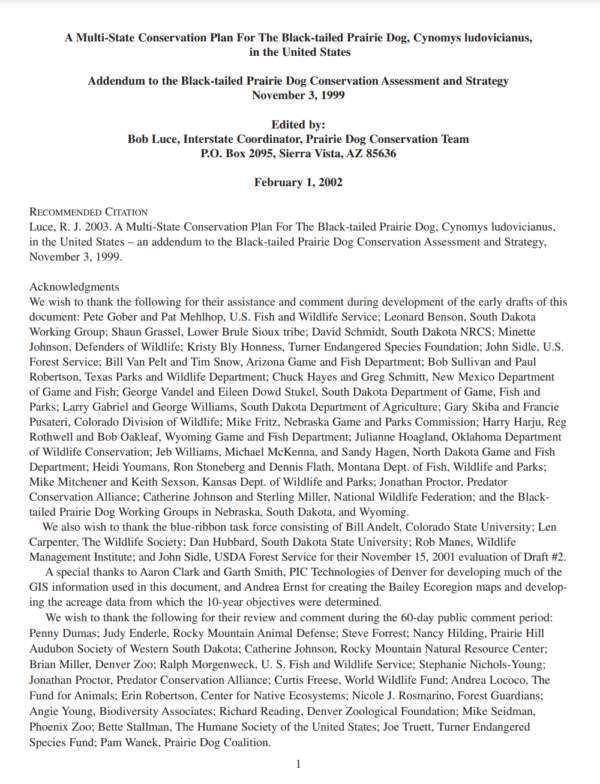In 1998, the National Wildlife Federation and Predator Conservation Alliance, Biodiversity Legal Foundation and Jon Sharps, filed petitions to list the black-tailed prairie dog as a threatened species. The U.S. Fish and Wildlife Service (Service) issued a “warranted but precluded” finding in February 2000. The petition and the finding both estimated the occupied acreage to be 768,000 acres range-wide, with 676,000 acres in the United States.
The eleven states within the range of the black-tailed prairie dog began a multi-state conservation effort in 1998 by forming the Interstate Black-tailed Prairie Dog Conservation Team. The Conservation Team developed the Black-tailed Prairie Dog Conservation Assessment and Strategy (CA&S) in 1999. The Multi-state Conservation Plan (MSCP) is an addendum to the CA&S, and was prepared to provide guidelines under which management plans will be developed by individual states and their respective working groups. The state management plans will contain the specific and measurable actions, deadlines, and objectives for that state. The target objectives in the MSCP are minimum values based on a range-wide analysis, and the states will build upon those minimum recommendations.
The MSCP, and eleven state management plans, are based on an adaptive management strategy. Therefore, the concepts and recommendations presented are considered a starting point from which to begin the conservation effort. The states do not assume that these initial measures alone will be effective in conserving the species for the long-term. The MSCP is based on first achieving the 10-year objectives, then modifying management as dictated by changing and evolving conditions.
Attached Files
| File | Action |
|---|---|
| BTPD_Addendum2002.pdf | Download |
- Version
- File Type pdf
- File Size 1,012.92 KB
- Publication Date February 1, 2002
- Download Count [3998]
- View Count [18]
